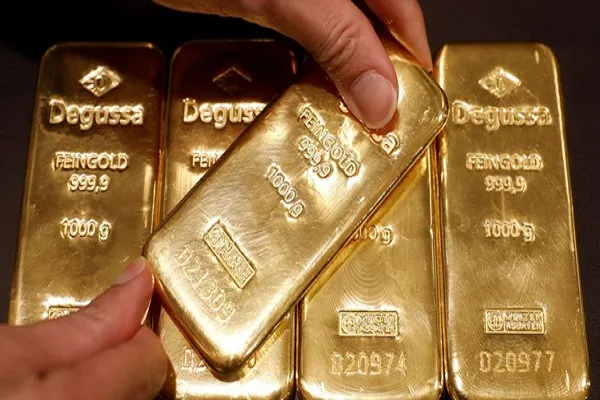Gold has always been a symbol of wealth, a store of value, and a safe haven during economic uncertainty. Its price fluctuates based on various factors, including supply and demand, inflation, and geopolitical events. Understanding the historical price of gold helps us grasp its role in the global economy and investment landscape. In this article, we delve into the price of gold in 1976, a pivotal year in its history, exploring the economic context, influencing factors, and implications for investors.
Historical Context of Gold in 1976
Economic Background
The mid-1970s were marked by significant economic challenges, particularly in the United States. The country was experiencing high inflation rates, oil crises, and economic stagnation—a phenomenon known as “stagflation.” These conditions led investors to seek refuge in gold as a hedge against inflation and currency devaluation.
The End of the Gold Standard
In 1971, President Richard Nixon announced the suspension of the dollar’s convertibility into gold, effectively ending the Bretton Woods system. This shift led to increased volatility in gold prices. By 1976, gold was traded on the open market, and its price was subject to supply and demand dynamics, rather than being fixed by government policy.
Price of Gold in 1976
Annual Average Price
In 1976, the average price of gold was approximately $124.74 per ounce. This figure reflects the annual average, but prices fluctuated throughout the year due to various market influences.
Monthly Price Breakdown
January: $111.00
February: $109.00
March: $113.00
April: $124.00
May: $126.00
June: $132.00
July: $132.00
August: $136.00
September: $141.00
October: $144.00
November: $148.00
December: $158.00
These monthly averages illustrate a steady increase in gold prices throughout the year, reflecting growing investor demand.
Factors Influencing Gold Prices in 1976
Inflation Concerns
The high inflation rates of the 1970s drove investors toward gold. In 1976, the inflation rate in the U.S. reached around 5.7%, prompting individuals to seek assets that could preserve their purchasing power. Gold has historically been viewed as a safeguard against inflation, leading to increased buying activity.
Geopolitical Tensions
Geopolitical events, particularly in the Middle East, influenced gold prices in 1976. The aftermath of the Yom Kippur War and the Iranian Revolution created uncertainties that bolstered gold’s status as a safe haven. Investors flocked to gold as tensions mounted, further driving up its price.
Central Bank Policies
Central banks, including the U.S. Federal Reserve, played a crucial role in the gold market. Their monetary policies, interest rates, and gold reserves directly affected investor confidence. In 1976, the Federal Reserve’s approach to managing inflation also impacted gold prices, as lower interest rates made gold more attractive compared to interest-bearing assets.
Market Sentiment
Investor sentiment can significantly impact gold prices. In 1976, the growing fear of economic instability and currency devaluation led to a bullish outlook for gold. This sentiment was reflected in the rising prices throughout the year.
Comparison with Other Years
Gold Prices in the Early 1970s
To understand the price movement in 1976, it’s essential to look at the preceding years. In 1970, gold averaged about $35 per ounce. The significant rise to over $120 per ounce by 1976 illustrates the dramatic shift in market dynamics.
Gold Prices in the Late 1970s
The upward trend continued into the late 1970s. By 1979, the average price of gold reached approximately $307 per ounce. This period marked the peak of the gold rush as economic and political factors converged to increase demand.
Investment Implications
Gold as a Safe Haven
The price movements in 1976 reinforced gold’s reputation as a safe haven. Investors seeking stability turned to gold amid economic uncertainty, showcasing its potential as a hedge against volatility in other asset classes.
Portfolio Diversification
For investors in 1976, including gold in their portfolios became increasingly attractive. The rising prices and historical performance of gold suggested that it could provide diversification benefits and protection against inflation.
Long-Term Trends
The price of gold in 1976 set the stage for future investment trends. Understanding this historical context allows investors today to appreciate gold’s role in modern portfolios and its ability to respond to economic challenges.
Conclusion
The price of gold in 1976 was a reflection of a tumultuous economic landscape characterized by inflation, geopolitical tensions, and shifting monetary policies. Averaging around $124.74 per ounce, gold emerged as a critical asset for investors seeking stability. The trends established in this pivotal year continue to inform investment strategies today, highlighting gold’s enduring appeal as a safeguard against economic uncertainty. As we look to the future, the lessons from 1976 remind us of the importance of historical context in understanding the precious metals market.
Related topics:
- What is The Price of Gold Today in UK(October 24)
- What is Gold Rate in India Today (October 24)
- What is the Price of Gold Per Gram (October 24)


